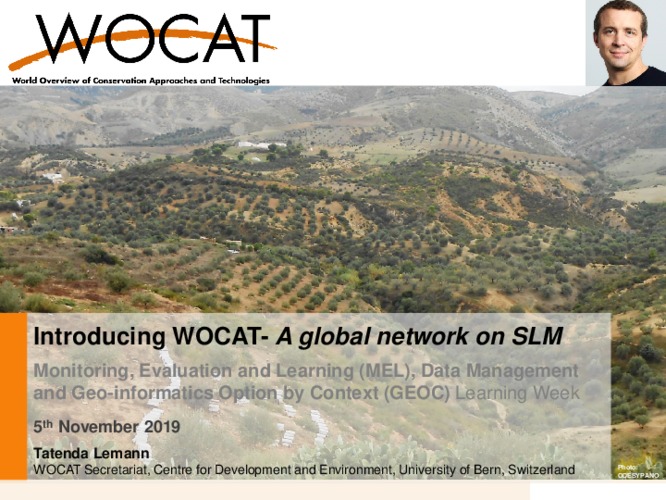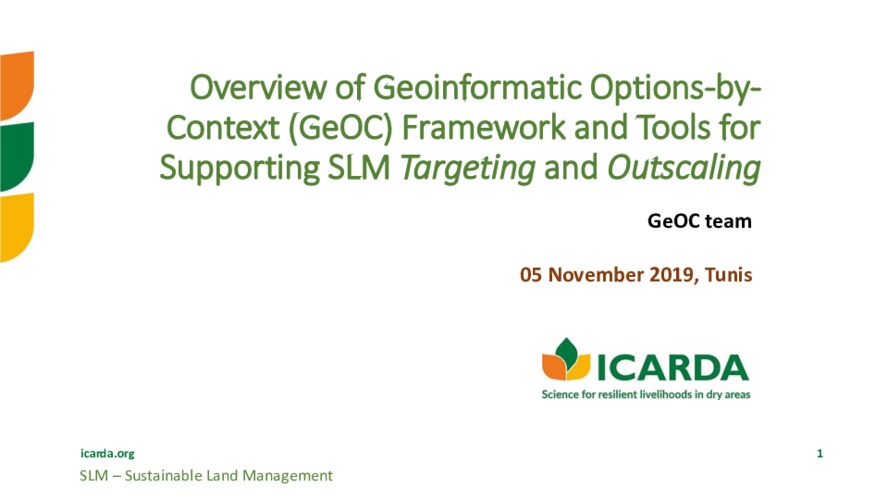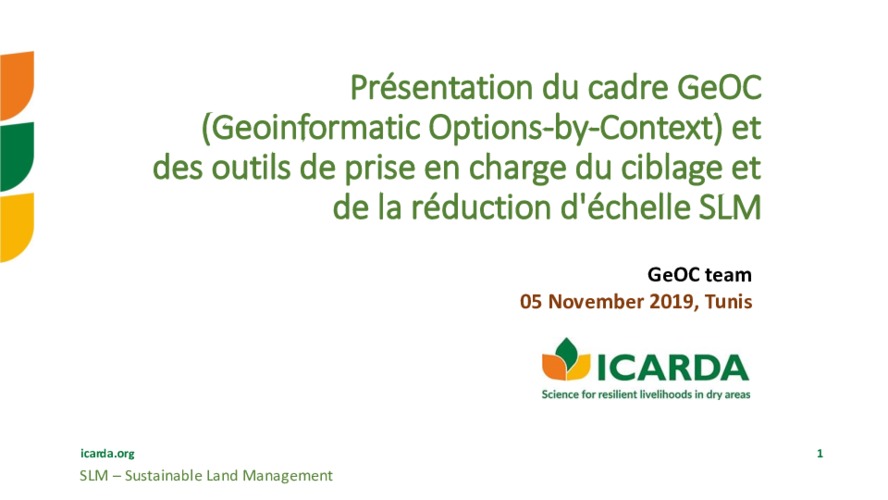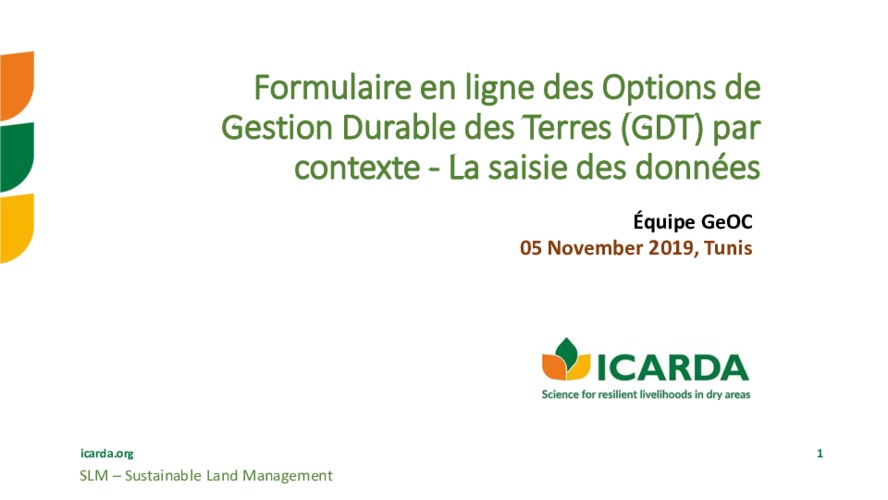Introducing WOCAT - A global network on SLM
Presentation about WOCAT, its approach and functionalities. The presentation took place the 5th of November, inside the "Monitoring Evaluation and Learning, Data Management and Geo-informatics Option by Context – Learning Week" In Tunis, Tunisia (1-7 November, 2019).





